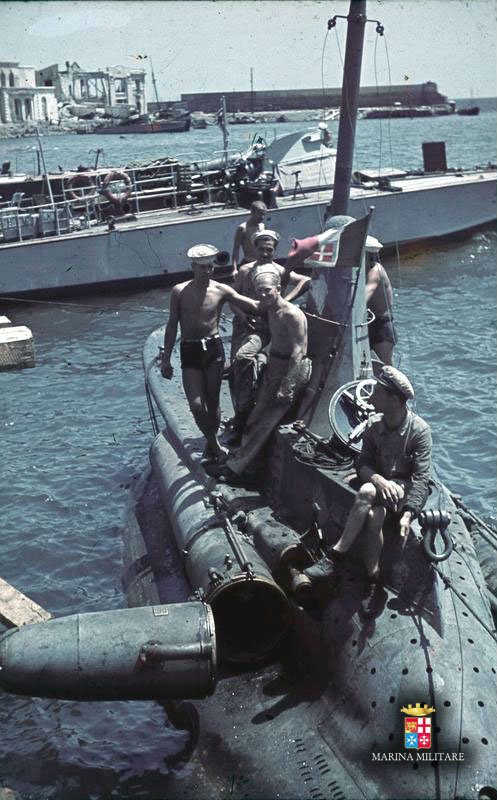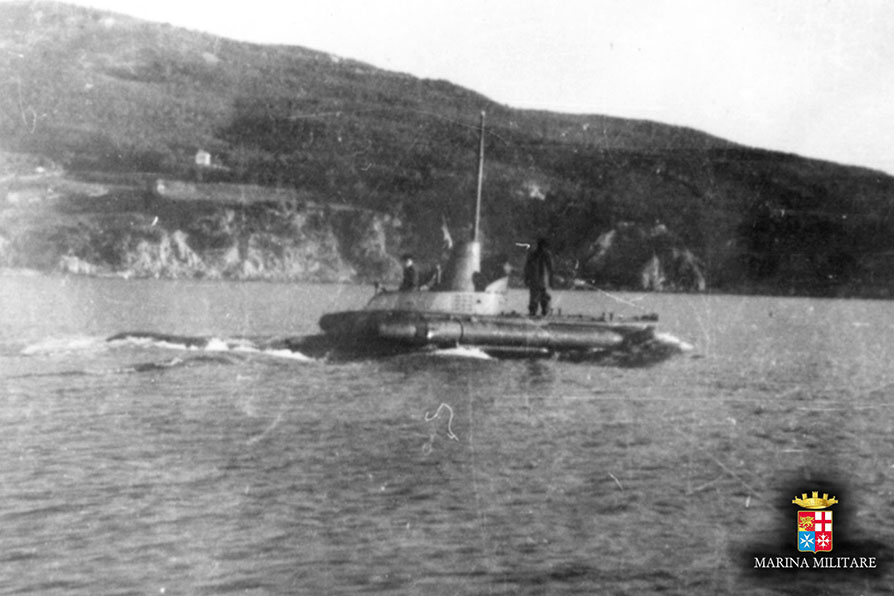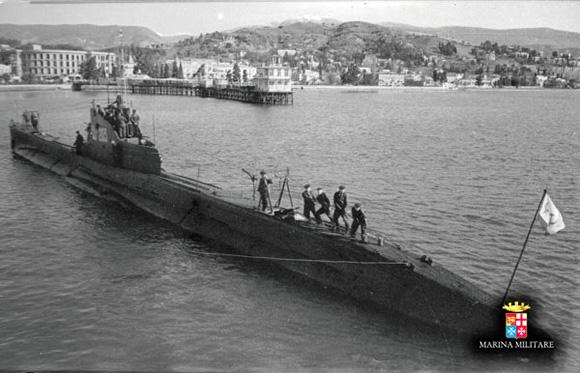During the Second World War, the Germans loudly called for the intervention in the Black Sea of the "insidious means" of the Italian Royal Navy, in order to be able to counter the Soviet Navy. The request officially arrived in 1942 in January to Admiral Riccardi by the German Admiral Raeder, who was particularly enthusiastic about the work of the X Flottiglia MAS in the Mediterranean.
The war of the Italians in the Black Sea was full of extraordinary feats, carried out by highly trained sailors; among these also the TV Armando Sibille, who in the night between 25 and 26 August 1943, was the architect of the sinking of the Soviet submarine ShCh-203.
"Calm sea, no wind, clear sky, last quarter moon", when the TV Armando Sibille, in command of the pocket submarine CB 4, patrolling near Capo Eupatoria, sighted, at a distance of only 400 meters, the outline of a surfacing Soviet submarine. For Sibille, two possibilities were envisaged: to leave immediately at high speed, trying to reach an optimal launch point for the attack or to stop and wait for the enemy submarine to have run out of the stern, so that it could find itself in a favorable position with respect to the light of the moon and thus reach a suitable position for the attack, without the risk of being sighted.
 If anything had gone wrong, Sibille had foreshadowed, in extrema ratio, the boarding of the submarine, an eventuality, to which he and his men had been carefully trained. The choice made was to remain still, with the engines turned off; the Soviet submarine passed by at a distance of 60 - 70 meters and as soon as it expired towards the stern, Sibille prepared to reach the optimal launch point at full speed. At 800 yards from the target he threw the left torpedo which he diverted completely unevenly as he reached the water; he thus proceeded to launch the second torpedo which after only 40 seconds hit the target. An enormous column of water rose and after the explosion the submarine was swallowed by the waters.
If anything had gone wrong, Sibille had foreshadowed, in extrema ratio, the boarding of the submarine, an eventuality, to which he and his men had been carefully trained. The choice made was to remain still, with the engines turned off; the Soviet submarine passed by at a distance of 60 - 70 meters and as soon as it expired towards the stern, Sibille prepared to reach the optimal launch point at full speed. At 800 yards from the target he threw the left torpedo which he diverted completely unevenly as he reached the water; he thus proceeded to launch the second torpedo which after only 40 seconds hit the target. An enormous column of water rose and after the explosion the submarine was swallowed by the waters.
The sinking was confirmed, a few days later, by a Soviet radio communication which, however, did not specify which was the submarine object of the attack. Thus, in the whirlwind of war events, in Italy it was believed to have caused the loss of the ShCh-207, which, in fact, survived the war and was expelled from the 1954. At the same time of the ShCh-203, which started on its last 20 August 1943 mission, traces had been lost for days, the last radio contact dated back to August 24, so the Soviet Navy was unaware of the real position of the submersible at the time of sinking. Thus it was that the uncertainties flared up and with them the theories: the thesis of the sinking of the ShCh-203 due to a mine concurred, for years, with that of the loss by a Romanian submarine.
The denial of the distorted theories came in 1949 when the wreck of the ShCh-203 was found by some divers, at a depth of 72 meters, not far from the coordinates of the sinking provided by Sibille. The third and second compartments of the submarine had been destroyed by the explosion, while the bow had broken off assuming an inclination of 70 ° to the right with respect to the body of the boat. The 45 crew members were awarded war merits and buried in the Sevastopol cemetery.
Although the ShCh-203, had not distinguished itself for military actions of great resonance, during the war, it had guided countless combat patrols, transport cruises and landing operations at Kerch, so its strategic role was not irrelevant at all. Strategic role that also had the small CB 4: the sinking of the ShCh-203, in fact, was only one of the enterprises that saw it as the protagonist.













